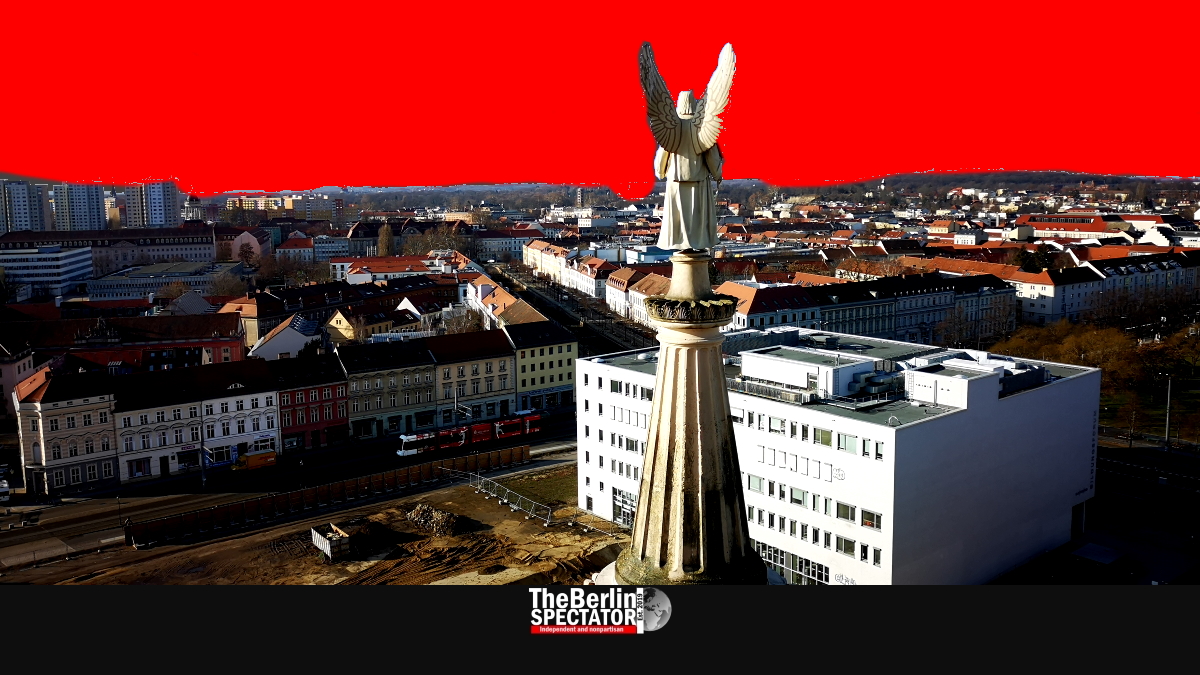Brandenburg and Saxony, two federal states in eastern Germany, are done with their state legislature elections. The outcome is alarming and gives hope at the same time. And it shows where exactly people vote for right-wing extremists.
On the day after the two elections, the world was still standing. On top of the Reichstag in Berlin, the German flag, in black, red and gold, moved in the wind. This animal called democracy was licking its wounds, but it already felt a lot better, knowing it had defended itself quite well against yet another attack from the far-right.
Second-Strongest Force
The haters who seem to be using Europe to fight Europe, and democracy to fight democracy, were the winners of last night because of their enormous surge compared to the last state elections five years ago. At the same time they lost since they did not become the strongest force, in neither of those two federal states.
In Brandenburg, the center-left SPD got 26.2 percent of the vote, while the extremist far-right AfD came in second, with 23.5 percent. Chancellor Angela Merkel’s conservative CDU reached only 15.6 percent, the Greens 10.8, ‘The Left’ 10.7, the BVB/FW alliance 5, and the liberal FDP 4.2, which means it will not enter the ‘Landtag’ in Potsdam.
Saxony looks similar, in the sense that the radical AfD came in second here as well. The CDU reached a percentage twice as big as in Brandenburg, namely 32.1 percent, the AfD 27.5, ‘The Left’ 10.4, the Greens 8.6 and the SPD an embarrassing 7.7 precent. Like in Brandenburg, the FDP failed, with 4.5 percent.
The Ring Around Berlin
Looking at Brandenburg a bit more closely reveals that things were not necessarily as expected. Usually, residents of larger cities will vote for center-left parties more than for right-wing or far-right parties. But in this federal state, it was a little different.
In Potsdam, the state capital, most of the ring around Berlin and in cities and towns located in the north of Brandenburg, a majority of voters chose the SPD. In Werder and some other places, the AfD only became the third-strongest party. In Wittstock, Brandenburg/Havel, Bad Belzig, Templin, Schwedt and other towns, the SPD celebrated victories.
In more rural areas, on the other hand, the extremist AfD tends to be very strong. This includes areas where coal mines are (or used to be) big employers, but also cities such as Frankfurt an der Oder, Eisenhüttenstadt or Cottbus. Even in the beautiful Lübbenau region, which welcomes countless tourists from all over the world, the haters won.
Nothing Achieves Something
Things look most alarming in Schradenland county, located in the very south of Brandenburg province, where the AfD won with 42.9 percent, while the ruling SPD reached less than 15 percent. Here, an AfD candidate named Volker Nothing achieved something by winning. His message: “Let’s seize control from the ignorants and the wreckers of society.” He meant all parties except his own.
In Saxony, the election map is mainly black (for CDU wins) and blue (for AfD wins). The only exceptions are electoral districts in the two largest cities. In Leipzig, the Greens won in two of them. They even managed to leave the AfD at the fifth place in ‘Leipzig 5’. In the rest of the city, the CDU won.
The other big Saxon city, Dresden, looks similar. Here, the CDU won throughout, except in ‘Dresden 5’, where the Greens took a slight lead. Again, the AfD scored its wins mainly in rural areas, including those known for its coal mines. Germany wants to end its coal era.
Contradiction and Frustration
Since the reunification of Germany, residents in the eastern provinces, the area of the former GDR, have chosen contrasting ‘protest parties’. Until a few years ago, many went for ‘The Left’, a successor party of the SED, which was the GDR’s ‘Socialist Unity Party’. Now many of them go for the extremist far right instead.
Polls in Brandenburg and Saxony reveal that a big majority there, far more than 80 percent, say their economical situation was good. At the same time many inhabitants say they feel like “second-class citizens” in Germany. This contradiction helps the AfD. The party uses the frustration to spread its xenophobic and racist agenda, its critics say.
After election day, the brown swamp, covered in the blue color from the AfD’s party logo, the wolf in sheep’s clothes, remains a danger, many believe. Democrats (in the sense that they cherish democracy) hope that the AfD has now reached its peak and will destroy itself within the next few years.
Related article: AfD’: Germany’s Wolf in Sheep’s Clothes


